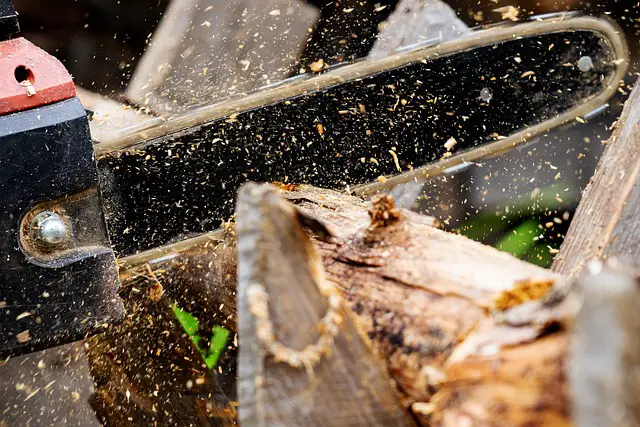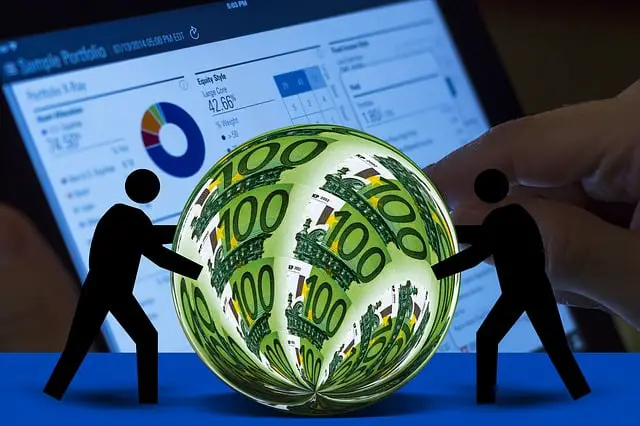Related: Barriers to a Circular Economy
1. Raw Materials and Natural Resources
In the context of the circular economy, one of the major challenges lies in the management of raw materials and natural resources. The traditional linear economy is heavily reliant on the extraction and consumption of finite resources, leading to resource depletion and environmental degradation. The circular economy aims to mitigate these challenges by adopting principles such as reducing, reusing, and recycling materials throughout their entire life cycle.
This requires a shift towards more sustainable and efficient use of resources, minimizing waste generation and maximizing their recovery. However, implementing circular economy practices in industries that heavily rely on basic materials, such as the construction sector, poses technical and logistical challenges. Additionally, a lack of knowledge and understanding surrounding circular economy concepts and strategies among key stakeholders and the wider public can hinder the actual implementation of circular initiatives.
a. Challenges Related to Availability of Resources
The transition to a circular economy presents several challenges related to the availability of resources. One of the key challenges is the reliance on resource-intensive economies, particularly in developing countries. These economies heavily depend on the extraction and exportation of natural resources, such as minerals, oil, and timber, which can hinder the transition to a circular economy.
The natural resource dependence of these countries creates a reliance on a linear economy, where resources are extracted, used, and discarded. Shifting towards a circular economy requires a significant change in the business models and practices of industries that rely on these resources. This can lead to resistance from governments and industries that fear negative consequences for their economies.
b. Challenges Related to Accessibility of Resources
One of the major challenges of implementing a circular economy is related to the accessibility of resources. In a circular economy, the goal is to keep resources in use for as long as possible and to minimize waste by reusing, recycling, and regenerating materials. However, this requires a reliable and accessible supply of raw materials and the ability to efficiently manage and recover them.
One issue that hinders the accessibility of resources in the context of a circular economy is the digital divide. Many developing countries, particularly those in rural areas, lack access to essential technology and digital infrastructure. This limits their ability to participate in circular practices such as proper waste management and recycling. Without access to the necessary tools and information, these countries are at a disadvantage when it comes to implementing circular economy initiatives.
Another challenge related to resource accessibility is the affordability of technology solutions. While digital technology plays a crucial role in monitoring and optimizing resource use in a circular economy, it can be costly to implement and maintain. This can pose a barrier for businesses and individuals, especially in developing countries where financial resources are limited.
c. Challenges Related to Costly Raw Materials
In a circular economy, the aim is to reduce waste and maximize the use of resources through recycling, repurposing, and reusing. However, the cost of obtaining raw materials can be a major barrier to the adoption and scalability of circular economy practices.
The high cost of raw materials can hinder the implementation of circular economy principles, as it may be more economical to continue using virgin materials rather than investing in the collection, sorting, and processing of waste materials. This can discourage businesses from transitioning to circular practices, especially those operating on tight budgets or in industries with low profit margins.
Furthermore, the economic implications of expensive raw materials can impact the viability of circular business models. The use of recycled or recovered materials in production processes, for example, can increase costs and reduce profit margins. This can make circular business models less attractive to private sector companies and hinder the industry-wide adoption of circular economy practices.
2. Supply Chain and Lifecycles
Supply Chain: One of the major challenges of implementing a circular economy is rethinking the traditional linear supply chain. In a circular economy, the aim is to minimize waste and maximize resource efficiency. This requires a shift away from the traditional “take-make-dispose” model towards a more circular approach that involves the reuse, repair, and recycling of materials. However, implementing circular practices in the supply chain can be complex and require collaboration and coordination among different stakeholders. This includes considering the entire lifecycle of products, from sourcing raw materials to their end-of-life disposal or reuse.
Lifecycles: Understanding and managing the lifecycles of products and materials is crucial in the circular economy paradigm. This means considering every stage of a product’s life, from design and production to distribution, use, and end-of-life. It involves assessing potential environmental impacts at each stage and finding ways to minimize negative effects and maximize resource efficiency. However, lifecycle thinking and the implementation of circular practices face challenges such as material complexity, lack of knowledge, and technical obstacles.
a. Challenges of Optimizing the Supply Chain for a Circular Economy
One of the major challenges in optimizing the supply chain for a circular economy is the complex integration of life cycles and industries. In a circular economy, resources are kept in use for as long as possible, and the materials used in one industry are often shared or reutilized by another. This requires a high level of coordination and collaboration among different sectors, which can be difficult to achieve.
Another challenge is the potential competition and vulnerability to disruptions. As the demand for recycled materials increases, there is a risk of supply shortages or price fluctuations. Additionally, disruptions in supply chains, such as natural disasters or political instability, can have a significant impact on the availability of recycled materials.
Balancing economic growth with reduced environmental impacts is also a key challenge. While the circular economy aims to decouple economic growth from resource consumption and waste generation, there is a need to ensure that businesses can still thrive financially. This requires innovative business models and strategies that can generate profit while minimizing environmental harm.
b. Challenges of Designing Products for an Entire Life Cycle in a Circular Economy
Designing products for an entire life cycle in a circular economy poses numerous challenges. One of the main difficulties is ensuring that products are designed to be easily disassembled, repaired, and recycled. This requires a shift from the linear “take-make-dispose” model to a more circular approach that emphasizes the recovery and reuse of materials.
Another challenge in the design process is the presence of lock-in mechanisms. These mechanisms, such as existing infrastructure or business models, can hinder the transition to a circular economy by reinforcing linear practices. Overcoming lock-in mechanisms requires innovative thinking and collaboration among various stakeholders.

3. Business Model Changes to Implement a Circular Economy Concept
The concept of a circular economy is gaining traction as businesses and governments recognize the urgent need for sustainable practices. However, implementing a circular economy concept requires significant changes to traditional business models. One of the key challenges is shifting away from the linear “take-make-dispose” model towards a more circular and regenerative approach. This involves rethinking the entire life cycle of products, from raw materials to production, consumption, and disposal.
Businesses must also consider the recovery of materials and their integration back into the production process. Another important aspect is the adoption of a holistic approach that encompasses the economic, societal, and environmental dimensions of sustainability. To achieve this, digital technology can play a crucial role in enabling the tracking, tracing, and monitoring of materials throughout the supply chain. As businesses begin to embrace circular economy practices, they not only contribute to the preservation of natural resources but also create new opportunities for innovation and growth.
a. Technical Challenges with Implementing New Business Models in Circular Economy
Implementing new business models in a circular economy (CE) comes with its fair share of technical challenges. These challenges often arise due to the need to shift from linear to circular practices, where resources are kept in use for as long as possible through recycling, reusing, and repairing.
One of the key technical challenges is the integration of circular principles across the entire supply chain. This involves rethinking and redesigning products to be easily disassembled and recycled. It requires collaboration with suppliers and manufacturers to ensure the use of sustainable raw materials and the integration of recycled materials.
Another challenge lies in the complexity of material integration (MI). In a circular economy, the aim is to create a closed-loop system where materials can be reused without downgrading their quality. However, achieving MI requires technological advancements and innovative processes to separate and recover materials efficiently.
Moreover, implementing circular business models requires a shift in mindset and user behavior. Consumers need to be educated about the benefits of circular practices and how to properly dispose of products at the end of their lifecycles. This entails overcoming the lack of knowledge and awareness surrounding circular economy principles.
In terms of financial management, companies need to choose appropriate online accounting software, that can effectively track and manage the financial aspects of their circular business models. This includes managing revenue from the sale of recycled materials and tracking the costs associated with recycling and waste management.
Transitioning from existing systems to circular practices can also pose difficulties. Companies may need to rebuild their infrastructure and processes to align with the principles of a circular economy. This can be a challenging and time-consuming process, but it is essential for creating a sustainable future.
b. Private Sector Engagement in Implementing Business Model Changes for Circular Economy
Private sector engagement plays a crucial role in implementing business model changes for circular economies. Adopting a circular economy approach is essential for sustainable development and resource optimization. However, businesses often face challenges in adopting circular economy principles due to various reasons, including technological constraints, lack of knowledge, and resistance to change.
One of the major challenges businesses face is the shift from linear to circular practices. It requires a fundamental change in the way products are designed, produced, and consumed. Implementing circular economy principles may require significant investments in infrastructure and technology, as well as changes in business processes and supply chain management. These changes not only involve a transition to using recycled materials but also embracing a holistic approach that considers the entire life cycle of products and promotes effective waste management.
Despite these challenges, businesses can benefit greatly from adopting circular economy principles. By implementing circular business models, companies can reduce their dependence on virgin raw materials, leading to cost savings and increased resource efficiency. Additionally, embracing circular practices can improve corporate reputation and appeal to environmentally conscious consumers. Moreover, the circular economy also facilitates innovation, collaboration, and resource optimization, encouraging businesses to explore new opportunities for revenue generation and competitive advantage.
Private sector involvement in the circular economy drives innovation and collaboration towards creating a sustainable consumption model. By engaging with the circular economy concept, businesses can drive technological advancements, develop new business strategies and models, and foster collaboration across supply chains. This engagement also encourages the recovery of materials from products, promotes the use of recycled materials, and contributes to the shift towards a more sustainable and environmentally friendly consumption model.
Also Read:
